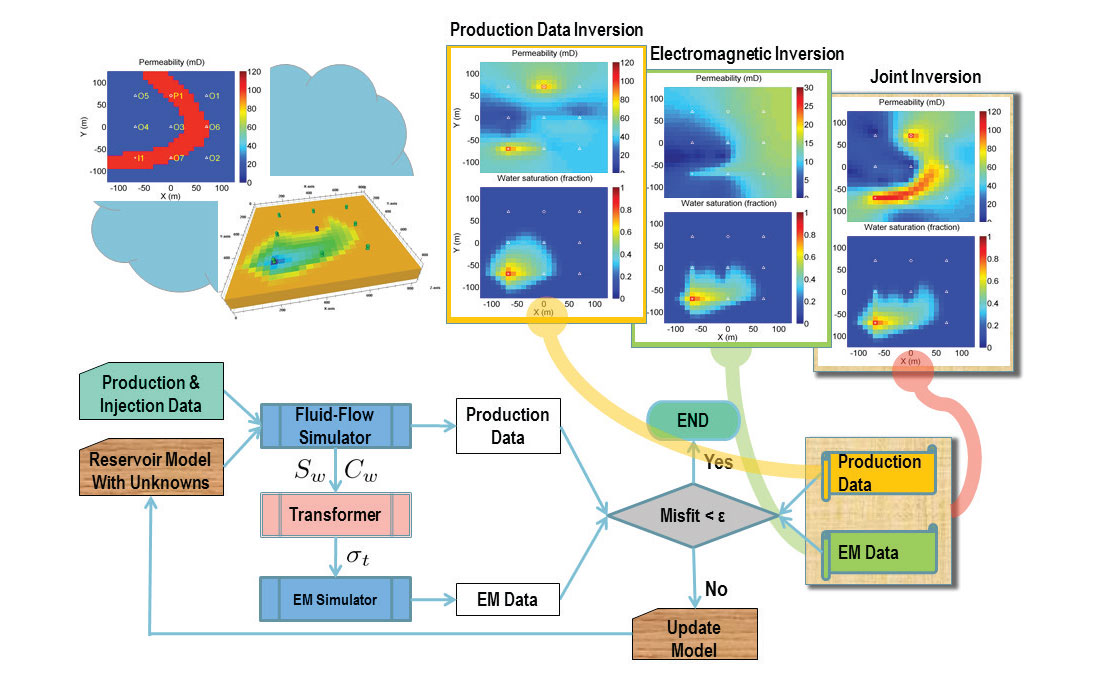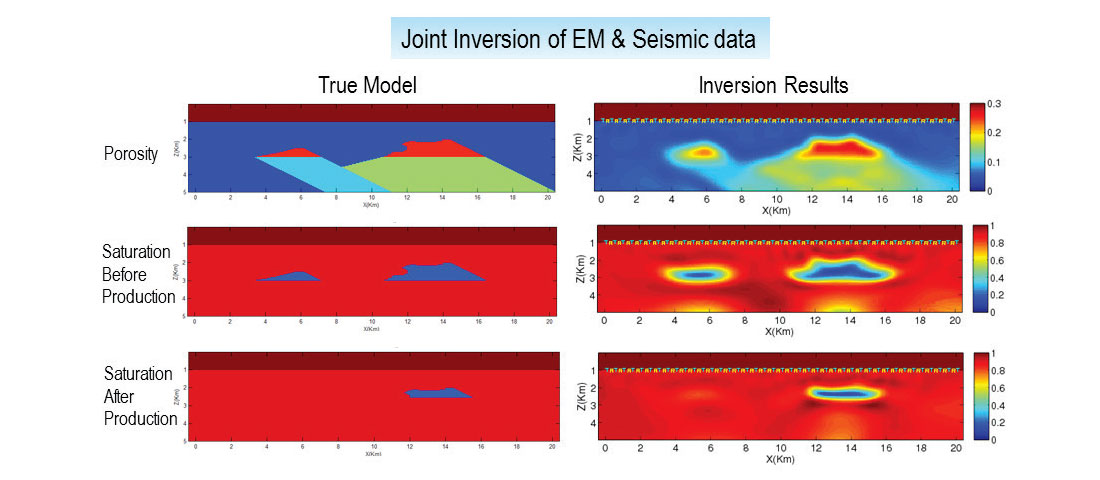A variety of measurements may illuminate the reservoir with varying coverage and resolution such as: electromagnetic (EM); controlled-source EM (CSEM); magnetotelluric (MT), surface-to-borehole EM (STB-EM); crosswell EM; seismic (surface seismic, crosswell seismic, and VSP); gravity (surface and borehole); and production history/well testing data. The interpretation of each measurement on its own will provide incomplete information due to nonuniqueness and limited spatial resolution. However, when integrated and combined with other measurements such as near-wellbore data, they may provide considerable value such as, for example, to enable estimation of reservoir properties, to obtain an improved reservoir model, and to provide a physics-based reservoir upscaling. At the end, it will help us in making appropriate field management decisions with reduced uncertainty.

This presentation will review joint inversion algorithms and workflows for integrating EM, seismic, and production data. It will analyze challenges, advantages, and disadvantages of these approaches. In particular, for reservoir characterization applications, joint structural and petrophysical algorithms for integrating EM and seismic data (CSEM and surface seismic, and crosswell EM and crosswell seismic) will be presented. For reservoir monitoring applications, the talk will describe EM data (for single-well, crosswell and STB) inversion algorithms constrained by the fluid- flow simulator. In the inversion for both EM and seismic, a full nonlinear approach (the so-called full-waveform inversion) will be employed so that all the information in the data can be utilized. Some test cases will be discussed.












Join the Conversation
Interested in starting, or contributing to a conversation about an article or issue of the RECORDER? Join our CSEG LinkedIn Group.
Share This Article